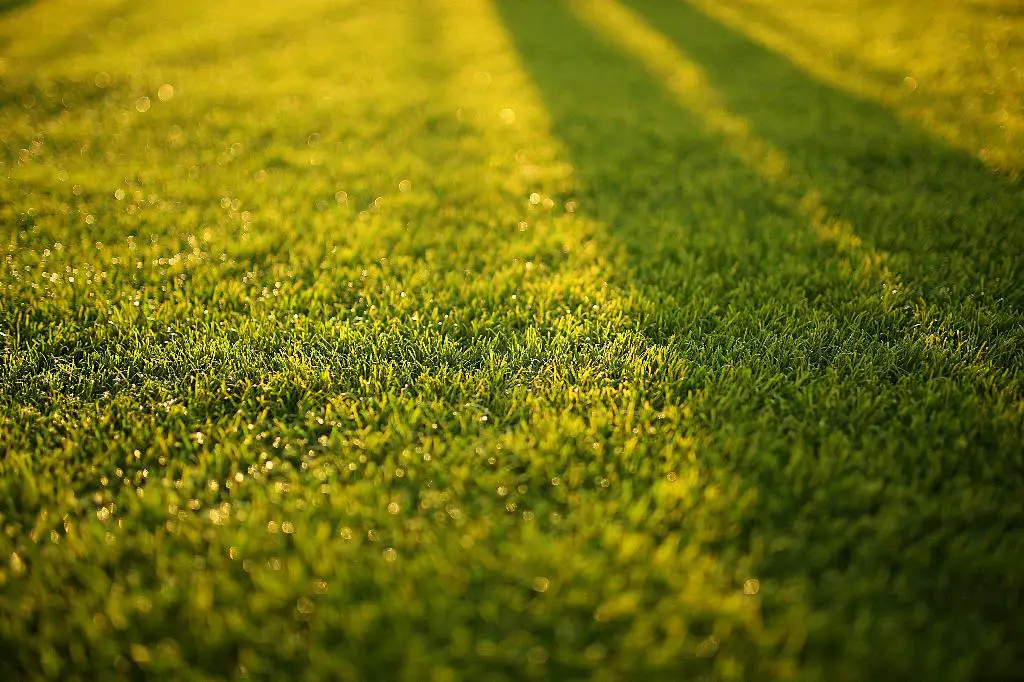Seeing your once lush green lawn turn yellow can be concerning, but fear not, there are several reasons why this might be happening. Let’s delve into some possible causes and solutions to help you get your lawn back to its vibrant green state.
Lack of Nutrients
One common reason why your lawn may be yellow is due to a lack of essential nutrients in the soil. Grass requires nutrients like nitrogen, phosphorus, and potassium to thrive. If your grass is not getting enough of these nutrients, it can start to yellow. Consider getting a soil test to determine which specific nutrients your lawn is lacking and then fertilize accordingly.
Over-fertilization
On the flip side, over-fertilizing your lawn can also cause it to turn yellow. Too much of a good thing can be detrimental to your grass, as excessive fertilizer can burn the roots and lead to discoloration. Make sure to follow the recommended guidelines for fertilizing your lawn and avoid applying more than necessary.
Watering Issues
Inconsistent or improper watering practices can also result in a yellow lawn. Overwatering can lead to waterlogged soil, causing the grass roots to suffocate and turn yellow. On the other hand, underwatering can leave your grass thirsty and unable to produce enough chlorophyll, resulting in discoloration. Be sure to water your lawn deeply and infrequently to promote healthy growth.
Disease or Pest Infestation
Yellowing grass can also be a sign of a disease or pest infestation. Common lawn diseases like fungus or pests like grubs can wreak havoc on your lawn, causing it to deteriorate and change color. If you suspect a disease or pest problem, it’s essential to identify the issue early and take appropriate measures to address it.
Compacted Soil
Compacted soil can restrict the flow of air, water, and nutrients to the grass roots, leading to yellowing. Compaction often occurs in high-traffic areas or areas with heavy clay soil. Aerating your lawn can help alleviate soil compaction and improve the overall health of your grass.
Improper pH Levels
The pH level of your soil plays a crucial role in the health of your lawn. Grass typically thrives in slightly acidic soil, around a pH of 6 to 7. If your soil is too acidic or alkaline, it can hinder nutrient uptake by the grass and cause it to yellow. Test your soil’s pH and amend as needed to create optimal growing conditions.
Environmental Stress
Extreme weather conditions like prolonged drought, excessive heat, or cold snaps can put stress on your lawn and cause it to yellow. Environmental factors can weaken the grass and make it more susceptible to discoloration. Consider implementing proper lawn care practices to help your grass withstand these stressors.
Incorrect Mowing Techniques
The way you mow your lawn can also impact its color and overall health. Mowing too short or too frequently can stress the grass and lead to yellowing. Make sure to adjust your mower height to the appropriate level for your grass type and avoid cutting off more than one-third of the grass blade length at a time.
Dormancy
During certain times of the year, cool-season grasses may enter dormancy in response to extreme temperature fluctuations or water scarcity. This dormancy period can cause the grass to turn yellow as it conserves energy to survive. It’s essential to understand the natural growth cycles of your grass and provide adequate care during these dormant periods.
Chemical Exposure
Exposure to chemicals like herbicides or pesticides can also cause your lawn to yellow. Accidental overspray or improper application of chemicals can damage the grass and affect its color. Be cautious when using chemicals on your lawn and follow the recommended instructions to prevent yellowing and other harmful effects.
Shade or Lack of Sunlight
If your lawn is located in a shady area with limited sunlight exposure, the grass may struggle to photosynthesize effectively, resulting in yellowing. Consider trimming overhanging branches or adjusting your landscaping to allow more sunlight to reach the grass. Alternatively, you can opt for shade-tolerant grass varieties that thrive in low-light conditions.

Conclusion
In conclusion, there are various reasons why your lawn may be yellow, ranging from nutrient deficiencies and over-fertilization to environmental stress and pest infestations. By identifying the underlying issue causing the yellowing and implementing appropriate solutions, you can restore your lawn’s health and vibrancy. Remember to practice proper lawn care techniques, address any soil imbalances, and monitor your grass regularly to keep it looking green and lush.
